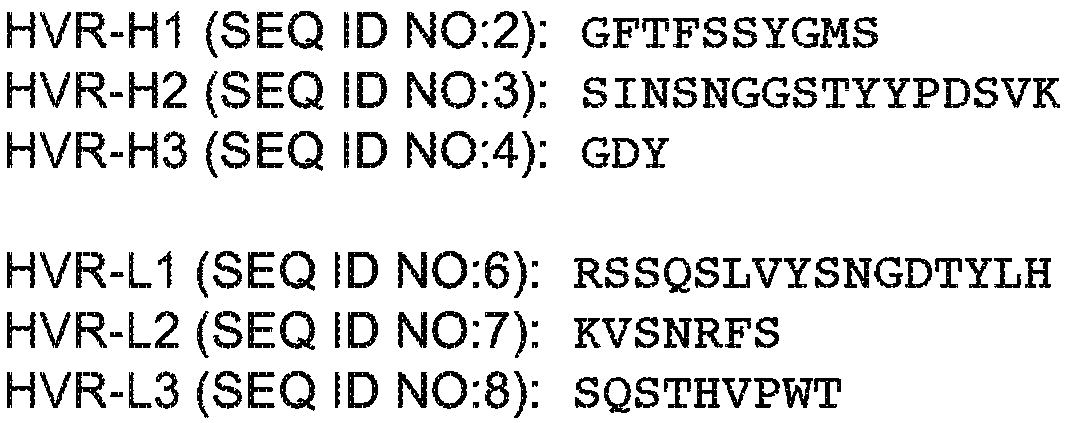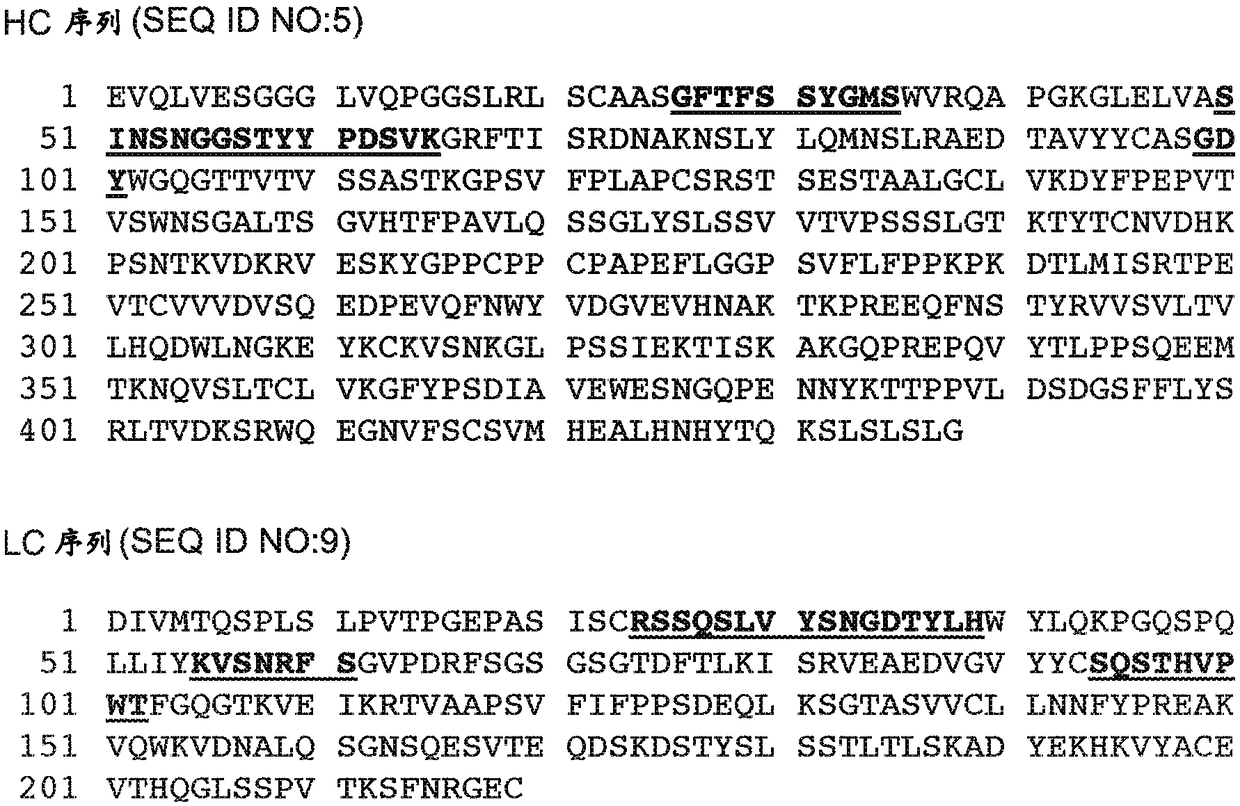High dose treatments for Alzheimer's disease
A technology for Alzheimer's and dosage, applied in the direction of disease diagnosis, measuring devices, antibody medical components, etc.
- Summary
- Abstract
- Description
- Claims
- Application Information
AI Technical Summary
Problems solved by technology
Method used
Image
Examples
Embodiment 1
[0415] Example 1-Clinical study of the safety and tolerability of crnibizumab (a humanized anti-Aβ monoclonal antibody) administered to patients with mild to moderate Alzheimer's disease
[0416] A randomized, double-blind phase I trial was conducted using a placebo-control to evaluate the humanized monoclonal anti-amyloid beta ("Aβ") antibody crenibizumab in the diagnosis of mild to moderate Alzheimer's Safety, tolerability, and pharmacokinetics in patients with Murray's disease (AD). The study is designed to evaluate doses up to 8 times the dose administered to patients in a phase II clinical trial. Participants included in the study were aged between 50 and 90 at the time of screening, had a Mini Mental State Examination (MMSE) score of 18 to 28 points (inclusive), and a GDS-15 score of less than 6 , 0.5 or 1.0 clinical dementia assessment-global score (CDR-GS), and the diagnosis of mild to moderate Alzheimer's disease based on NINCDS-ADRDA criteria. Participants are also re...
Embodiment 2
[0436] Example 2-Clinical study of crnibizumab (a humanized anti-Aβ monoclonal antibody) in the treatment of pre-treatment to mild Alzheimer's disease
[0437] Research design and goals
[0438] A multicenter, randomized, double-blind, placebo-controlled trial was conducted to confirm that the humanized monoclonal anti-amyloid beta ("Aβ") antibody crenibizumab has a precursor to mild Alz Impact in amyloid-positive patients with Haymer's disease (AD). Participants in this study were aged between 50 and 85 at the time of screening, had a weight between 40kg and 120kg (inclusive), and had evidence of the pathological process of AD, based on cerebrospinal fluid (CSF) amyloid β1- 42 levels of positive amyloid evaluation, as in Measured on the beta-amyloid (1-42) test system or amyloid PET scan. The other inclusion criteria are: (1) Abnormal memory function demonstrated during screening, selective recall test with free and prompt less than or equal to 0.67-immediate recall (FCSRT) pro...
Embodiment 3
[0441] Example 3-Exposure response to crivizumab supports prodrome to 60 mg / kg dose in the treatment of mild Alzheimer's disease
[0442] Methods and goals
[0443] For patients suffering from a more mild form of AD, the phase 2 study of crenibizumab showed consistent treatment benefits at 15 mg / kg intravenous doses, while the low 300 mg q2wk subcutaneous dose level lacked consistent treatment effects between endpoints. It is suggested that higher dose is related to greater efficacy signal. In these two phase 2 studies, crenibizumab is safe and well tolerated, supporting that a complete treatment window has not yet been explored. A disease progression model of mild to moderate AD was established, which simultaneously described the longitudinal changes of the clinical endpoint ADAS-Cog and the sum of CDR sub-items (CDR-SB) of patients in the phase 2 study. The model was extended to describe the impact of key demographic covariates on disease progression and the impact of cranibizu...
PUM
 Login to View More
Login to View More Abstract
Description
Claims
Application Information
 Login to View More
Login to View More - R&D
- Intellectual Property
- Life Sciences
- Materials
- Tech Scout
- Unparalleled Data Quality
- Higher Quality Content
- 60% Fewer Hallucinations
Browse by: Latest US Patents, China's latest patents, Technical Efficacy Thesaurus, Application Domain, Technology Topic, Popular Technical Reports.
© 2025 PatSnap. All rights reserved.Legal|Privacy policy|Modern Slavery Act Transparency Statement|Sitemap|About US| Contact US: help@patsnap.com



